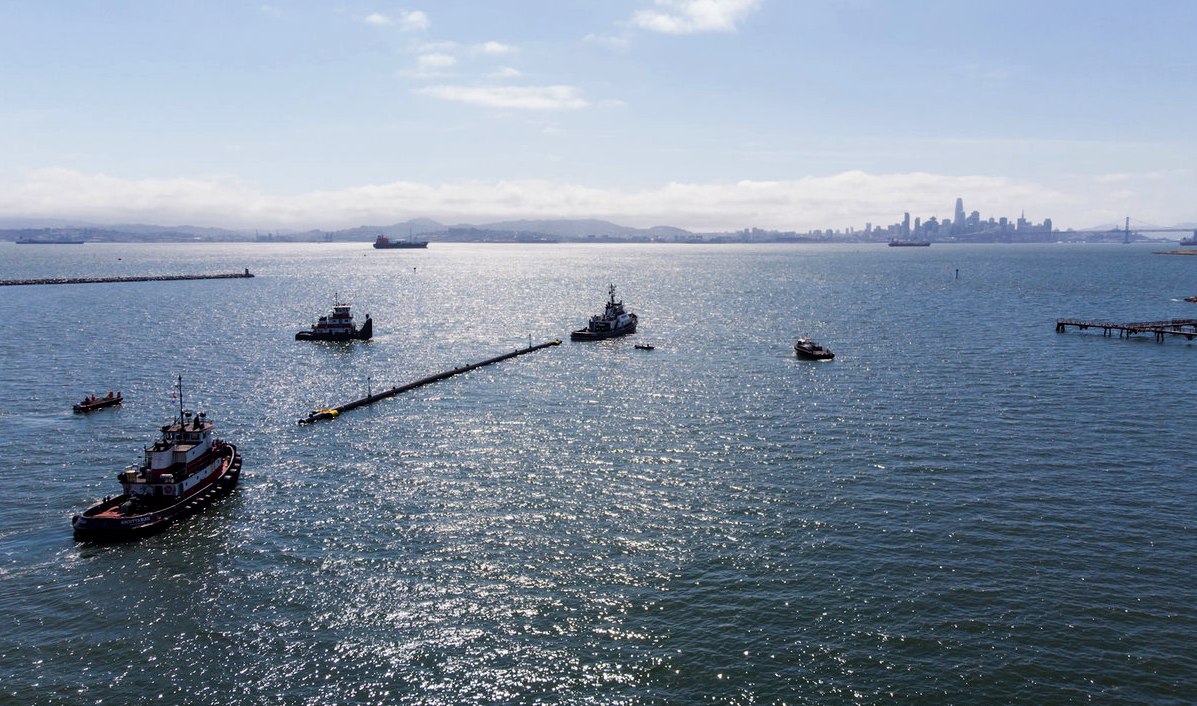|
2017 THE OCEAN CLEANUP PROJECTS
PLEASE USE OUR A-Z INDEX TO NAVIGATE THIS SITE
|
|
On May 11, 2017, The Ocean Cleanup announced the next step is to test their new drifting system in the North Pacific in 2017.
- The seabed anchors were replaced with sea anchors, allowing it to drift with the currents, but moving more slowly. This allowed the plastic to "catch up" with the cleanup system. The lines to the anchor would keep the system in a U-shape. This design allows the system to drift to locations with the highest concentration of debris.
- An automatic system for collecting the plastic was dropped. Instead, the system would concentrate the plastic before removal by support vessels.
In June 2017, researchers published a paper in Nature Communications, with a model of the river plastic input into the ocean. Their model estimates that between 1.15 and 2.41 million metric tonnes of plastic enter the world's oceans every year, with
86% of the input stemming from rivers in
Asia.
The Ocean Cleanup is non-government engineering environmental organization based in Netherlands, that develops technology to extract plastic pollution from the oceans.
Boyan Slat is not alone in the fight against ocean plastic. These emerging technologies could all play a part in containing the mountain of plastic that is accumulating on the oceans floors, by recovering floating debris before it sinks. New ideas are welcomed.
PROJECT HISTORY 2012 - 2021
2021 - Qualified success Sept 16 (Reuters)
OCEAN CLEANUP PROJECTS
* Aliance to end Plastic Waste * Boyan Slat's ocean booms * 4Ocean recycled plastic bracelets * Seabin * SeaVax autonomous drones
LINKS & REFERENCE
https://theoceancleanup.com/
Press Releases
8 September 2018 The World’s First Ocean Cleanup System Launched from San Francisco 22 March 2018 Great Pacific Garbage Patch Growing Rapidly, Study Shows 21 December 2017 Research Shows How Plastic at Sea Turns into Toxic Fish Food 7 June 2017 First Estimate to Quantify Global Plastic Input from Rivers into Oceans 11 May 2017 The Ocean Cleanup Announces Pacific Cleanup to Start in 2018
WIND
AND WAVES
-
The floating boom systems are designed to capture plastics ranging from small pieces just millimeters in size, up to large debris, including massive discarded fishing nets (ghost nets), which can be tens of meters wide.
|
|
|
ABS - BIOMAGNIFICATION - CANCER - CARRIER BAGS - COTTON BUDS - DDT - FISHING NETS HEAVY METALS - MARINE LITTER - MICROBEADS - MICRO PLASTICS - NYLON - OCEAN GYRES - OCEAN WASTE PACKAGING - PCBS - PET - PLASTIC - PLASTICS - POLYCARBONATE - POLYSTYRENE - POLYPROPYLENE - POLYTHENE - POPS PVC - SHOES - SINGLE USE - SOUP - STRAWS - WATER
PLEASE USE OUR A-Z INDEX TO NAVIGATE THIS SITE
|
|
|
This website is provided on a free basis as a public information service. copyright © Cleaner Oceans Foundation Ltd (COFL) (Company No: 4674774) 2019. Solar Studios, BN271RF, United Kingdom. COFL is a company without share capital.
|




